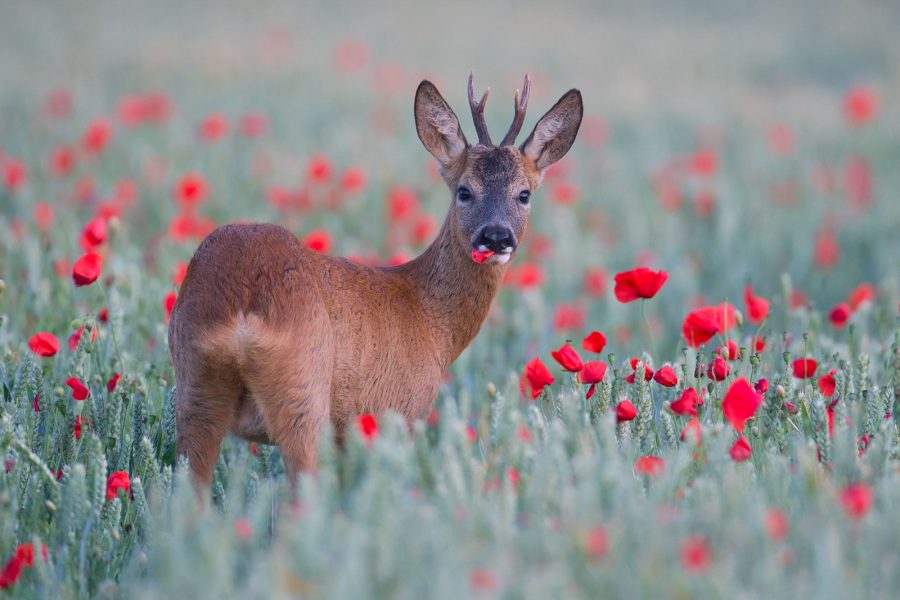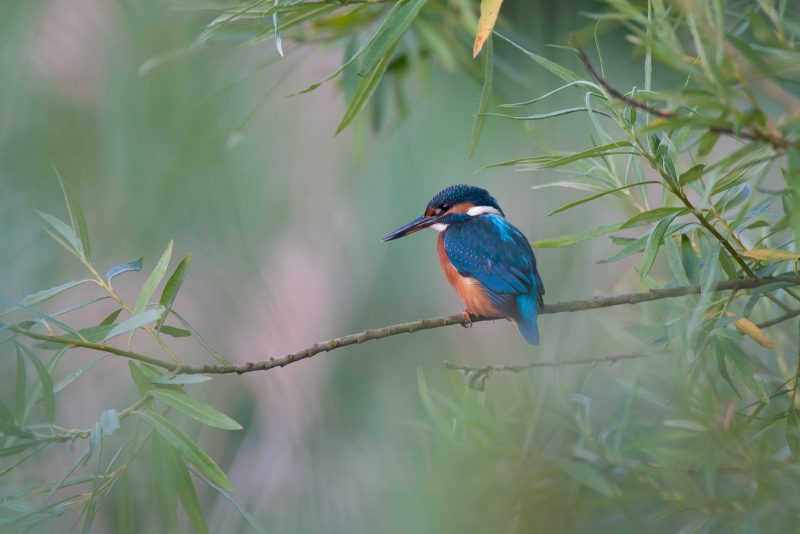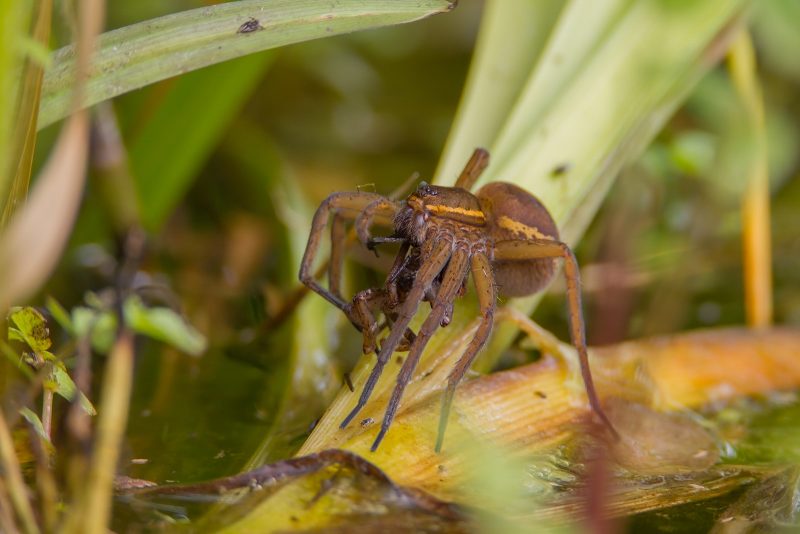10 Best Places for Wildlife Photography in Suffolk

With a rich and diverse variety of habitats, wildlife photography in Suffolk is a must for nature photography in the UK.

From the Breckland in the west to 50 miles of coastline on the East coast, with woodlands, rivers, wildflower grasslands, arable farmland, and vast areas of reedbeds in between, there are plenty of sites to visit all year round.


Here is my guide to some of the best places to visit in the county for nature photographers.
1. Breckland – Cavenham Heath National Nature Reserve
Situated in the northwest of the county, this area of heathland and conifer plantations boasts a unique diversity of flora and fauna, including many species of rare plants found only in this region.
The Cavenham Heath National Nature Reserve is a prime example of this habitat.
As you drive down the lane to the reserve off the High Street in the village of Tuddenham, you will pass through areas of heathland, open grassland, and mixed woodland.
The reserve is home to a vast diversity of wildlife, including a healthy population of adders that can be found basking in the early spring.

To photograph adders, head out on warm days around mid-morning and look for them warming up at the bottom of gorse bushes. I usually use a medium telephoto lens, such as a 100-400mm, often with a 1.4 extender so as to keep my distance and not disturb these shy reptiles.
The reserve is also known for its small population of breeding stone curlews, but this population increases in late summer as it is a pre-migration roost for the birds. In some years, over 100 birds have been seen together.
Read more: How to Photograph Woodland Birds
2. Lackford Lakes – Suffolk Wildlife Trust
Formerly gravel pits, this site near Bury St. Edmunds has been transformed by the Suffolk Wildlife Trust into a wonderfully diverse nature reserve with lakes, reedbeds, woodland, and grassland.
Many photographers visit to try and capture the elusive kingfisher, which can even be seen on the small pond right outside of the visitor centre.
The best hides for this bird are a short walk from the car park, where tree branches have been placed in the water to encourage the birds to fish from.

Your biggest lens would be best for photographing these birds, and do not be surprised to find the hides busy with fellow photographers.
Kingfishers can be seen all year on the reserve unless a period of cold weather freezes up the lakes, and the birds will head off down the local river or even to the coast.
The birds are most active when feeding their young in the summer, but if we have a very hot year, the pools in front of the hides become covered in algae, so the birds look for somewhere else to fish.
This reserve is not all about the kingfishers, though, and I recommend wandering around the reserve to capture the variety of other wildlife. It’s particularly good for muntjac deer that have become used to the many visitors.

There are plenty of wildfowl all year round, but winter is a great time for birds. In winter, flocks of siskins and redpolls can be seen feeding on alder tree seeds.
I am a big fan of photographing common species, so I often head to the grassland area of the reserve to photograph the many rabbits, which, again, like muntjacs, can be quite tolerant of a close approach.
Read more: How to Photograph Kingfishers
3. Knettishall Heath – Suffolk Wildlife Trust
Situated in the north of the county, this reserve has a Breckland diversity with heathland and mixed woodland.
In summer, areas of the woodland are lit up with flowering foxgloves, and the flowering bramble bushes attract an array of insects from bees to butterflies.
The summer highlight is the banded demoiselle damselflies on the slow-moving Little Ouse River that borders the north side of the reserve.

These living jewels are a fantastic species to photograph, be it capturing them resting on vegetation on the river bank or challenging yourself to photograph them flying over the water.
A range of lenses can be used for these, from a wide-angle lens to show them in their habitat to a telephoto lens for capturing them over the water.
Remember, for any insect in-flight image, I would recommend using a very fast shutter speed of at least 1/5000th of a second. This may require increasing your ISO, even on a bright sunny day.
Read more: How to Photograph Damselflies and Dragonflies
4. Redgrave and Lopham Fen – Suffolk Wildlife Trust
Not far along the county’s northern border from Knettishall Heath is this reserve. Again, like many others, it has diverse habitats from woodland to reedbeds.
It’s beautiful any time of the year, but it really comes alive in spring and summer with many migrant bird species using the reserve to breed. Hobbies can be seen in early summer hunting across the reedbeds for insects, particularly dragonflies.
Birds in flight are never an easy subject, but autofocus technology has certainly helped. If you are struggling to photograph these birds, watch their behaviour as they hunt.

The birds, if unsuccessful with a dive for prey, will fly upwards and stall in flight, looking for a prey item before diving back down. This can be a good moment to find the bird in your viewfinder and lock on to capture them in flight.
This reserve is also one of the few places in the UK where you have a chance of seeing the rare fen raft spider, which I will talk about later in this article.
Read more: 4 Essential Tips for Photographing Birds in Flight
5. Bradfield Woods – Suffolk Wildlife Trust
A wonderful ancient deciduous woodland south of Bury St. Edmunds, this reserve is a place to wander around the criss-cross pattern of woodland rides to photograph the array of insects and plant life.
From spring to autumn, there is always a species to photograph. Warming spring days bring out several species of butterfly, with the male brimstone being the highlight.

Early mornings or evenings can be a good time to find butterflies resting on the flowers.
I recommend using a telephoto lens to capture these. With a minimum focusing distance of less than a meter, you can keep your distance without disturbing the subject and still get a frame-filling image.
Where possible, try to have your subject at a 90-degree angle as you photograph it, be it with its wings open or shut as it rests.
Read more: Butterfly Photography – How to Photograph Butterflies
6. Ipswich
This is Suffolk’s largest town, and like most large urban areas, it has several large parks that provide wildlife photographers with a diverse range of subjects.
Christchurch Park and Holywells Park are both excellent places to photograph common species such as grey squirrels, mallard ducks, and Canada geese, but they can also provide rarer subjects such as tawny owls, grass snakes, mandarin ducks, and little grebes.

From spring to autumn, various butterfly species can be found in all the parks.
But a seasonal highlight is to visit Landseer Park, which is mostly an open grassland site where you can photograph various grassland species, including the marbled white butterfly.
Chantry Park is excellent for spring flowers and has a beautiful carpet of bluebells in the spring.
Bourne Park has a circular walk that takes you through woodland and reedbeds where you can see summer migrants such as reed and sedge warblers, as well as various species of dragonflies and damselflies.
Read more: How to Harness Artificial Light for Stand Out Urban Wildlife Photos
7. Carlton Marshes – Suffolk Wildlife Trust
Benefitting from the National Lottery Hedge Fund, this reserve in the northeast of the county, near Lowestoft, has expanded and undergone major renovations in recent years.
Even from the new visitor center, you might see water voles in the dykes below or barn owls hunting over the wetland meadows.
Photographic opportunities are available throughout all seasons, from winter wildfowl to summer dragonflies.
The reserve is at its best during summer, with beautiful displays of wetland flowers, including marsh orchids and the numerous insect species that feed on them.
Barn owls and marsh harriers can be spotted hunting for food for their young, while brown hares and Chinese water deer are often seen feeding in the meadows.

The dykes that border the wet meadows are home to an array of creatures, with water voles and otters often swimming up and down the waterways.
These dykes are also home to the very rare fen raft spider that hunts aquatic prey and can be seen motionless as it waits for prey on or close to the water’s surface.
There is a particular dyke opposite the visitor centre that can be a good spot to see the spider, although I often need the assistance of a friendly volunteer to point it out since they are pretty hard to see until you get your eye in.
You may need the longest lens you have, as they are often on the other side of the dyke. I have used a combination of a long lens and extension tubes for photographing this species in the past!
Read more: How to Take Amazing Spider Macro Photos
8. RSPB Minsmere
This is one of the RSPB’s major reserves across the UK and is a popular destination for wildlife watchers and photographers due to its various habitats of wetland scrapes, reedbeds, heathland, deciduous woodland, sand dunes, and shingle beach.

This reserve is home to thousands of species, including the elusive bittern that spends much of its time hidden away in the reedbeds.
While there are no guarantees with wildlife watching, Minsmere is one of the best places to see and photograph this species, particularly from early spring to summer, although they can be seen all year round.
To increase your chances of spotting one, head to the aptly named Bittern hide or Island Mere hide and be prepared to spend some time there.
Often, you might only catch a glimpse of a quick flight across the reedbed, but if you are lucky, you may spot an individual out in the open on areas of reedbed that have been cut down in front of the hide.

I have visited Minsmere twice in the last week (April) and on one occasion, from the Bittern hide, I saw a male bittern out in the open for over two hours. It was feeding on small fish and even booming a couple of times.
To capture such sightings, you will need your longest lens as the birds are generally far away.
Be prepared to have quick reactions to capture flight shots as there are no warnings as to when a bird will fly up from the reeds, with flights often being short, swift, and low over the reeds.
I also recommend exploring the Scrape’s area of the reserve to find other seasonal highlights such as avocets and terns in late spring and summer, or ducks and geese in the winter.
In all seasons, there is a chance to photograph a resident marsh harrier as it appears over the Scrapes, causing birds to fly up in flocks.
During the breeding season, you can photograph various birds mobbing the raptors to force them away from the nesting site.

Due to the circular nature of these Scrape’s and hide positions, you can choose where to photograph from based on the light, be it behind or in front of you, depending on the image you have in mind.
For instance, in the late evening, you can go into the East hide to photograph birds backlit, silhouetting them against the golden sky or reflecting them in the orange water of the shallow Scrape.
Read more: What are the Best Lenses for Bird Photography?
9. RSPB Havergate Island
Suffolk’s only island is only accessible via official RSPB boat trips from Orford quay. This small piece of land, which sits in the shadow of the former bomb testing site on neighbouring Orfordness, is made up of shallow saltwater lagoons and saltmarsh.

It’s a seasonal home to many bird species, with nesting avocets, terns, gulls, and recently, to the delight of the RSPB, spoonbills in summer.
And with many more species of wildfowl and waders in the winter, this reserve provides photographic opportunities all year.
However, it is usually not the birds that wildlife photographers board the boat for, but the small population of brown hares they are keen to photograph.
Renowned for being more approachable than their mainland cousins, the ‘Havergate Hares’ will happily sit for photographers.
This sitting, or more so sleeping, is often under or amongst gorse bushes, so getting a nice clean background can be a waiting game.
For anyone who does not know, hares spend a lot of time sleeping. I have spent many hours with hares in my viewfinder waiting for them to wake up.

Patience is the key as this is the time to hopefully capture various behavioural images.
They will often have a wash, using their tongue to clean their fur before stretching themselves and then finding various vegetation to feed on before settling down to sleep again.
This behaviour may only last a few minutes and they can rest for several hours.
10. Arable farmland
All the previous locations mentioned in this article are managed nature reserves or parks. However, Suffolk has vast areas of arable farmland with adjoining woodland, which is home to a large diversity of wildlife.
Many landowners/farmers embrace the wildlife on their land with the encouragement of various wildlife organizations.
Personally, I have captured many of my favourite images of roe deer, brown hare, barn owl, and grey partridge just to name a few species on local Suffolk farmland.
I have been fortunate to have been allowed access to private land over the years, but many of my farmland images have been captured either along public footpaths or from inside my car on public roads.

I particularly find using my car as a mobile hide to be successful, either by slowly driving down quiet country lanes (of course adhering to all driving laws) and seeing what I can find, or parking up off the road and waiting to see what might wander by.
For both scenarios, your movement inside the vehicle or lack of it is key. While driving, I will already have the camera on the passenger seat with the window down, and when stationary, the camera on a beanbag.
For both examples of this kind of photography, I have been able to get within a few meters of the wildlife I wanted to photograph with patience and persistence being the key.
Read more: 6 Tips for Better Fieldcraft in Wildlife Photography
In conclusion
Suffolk is a wildlife photographers paradise with subjects big and small to capture throughout the seasons. Come and see for yourself!
I hope this guide helps you with some of my favourite places I visit, though there are plenty of others across the county. Check out the Suffolk Wildlife Trust and RSPB websites for more information of all their reserves in the county.
I hope you enjoy your visit.





